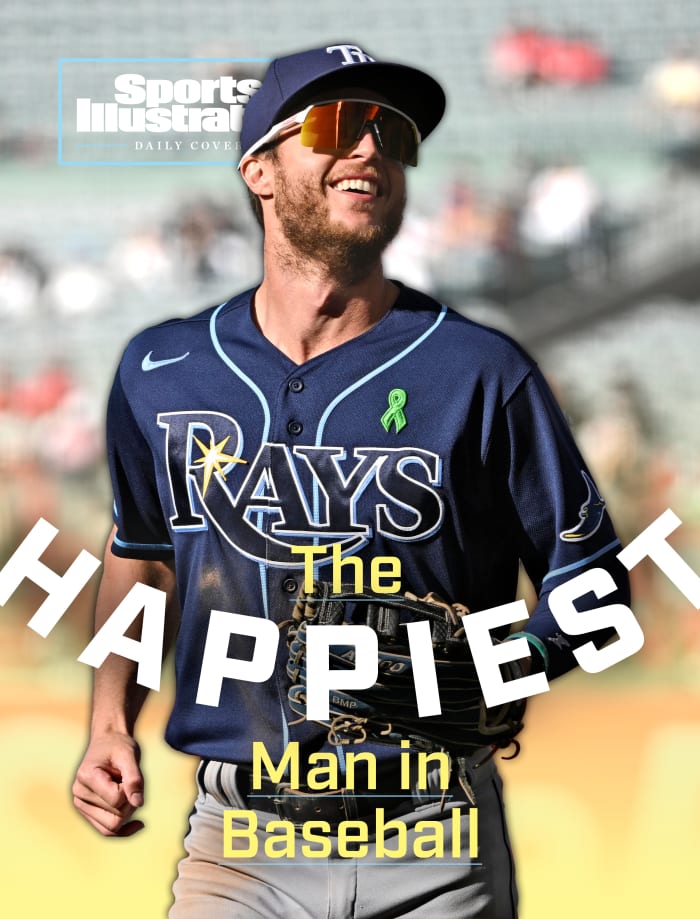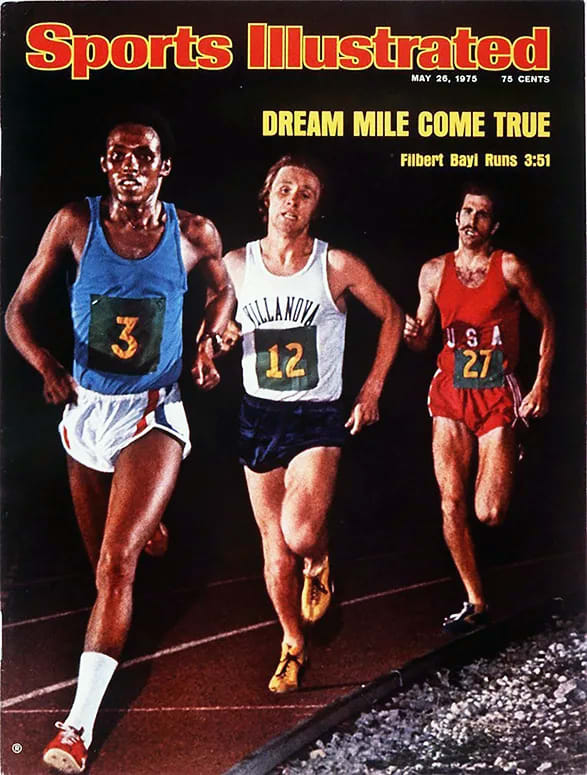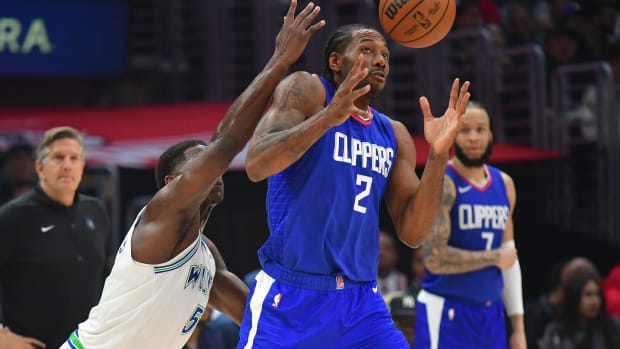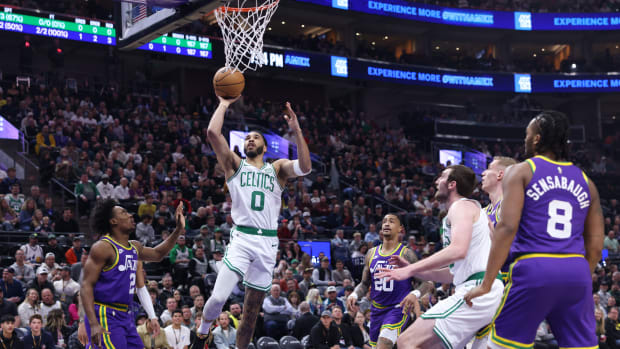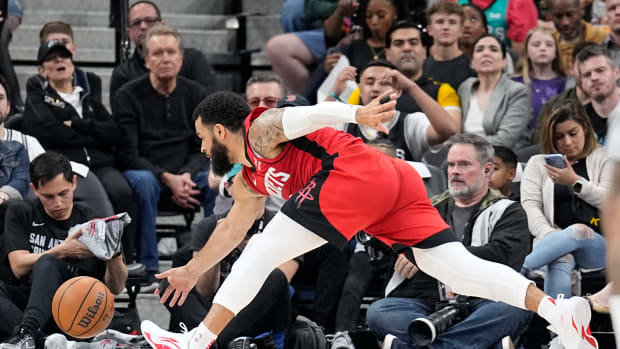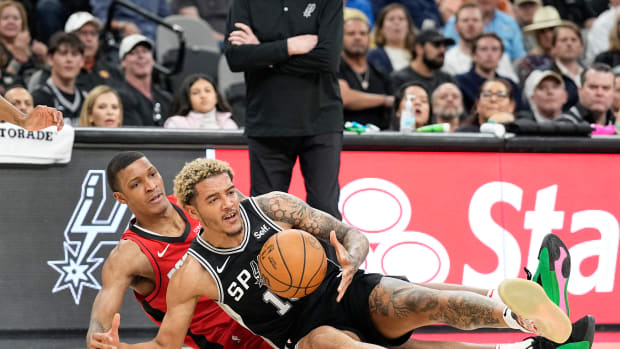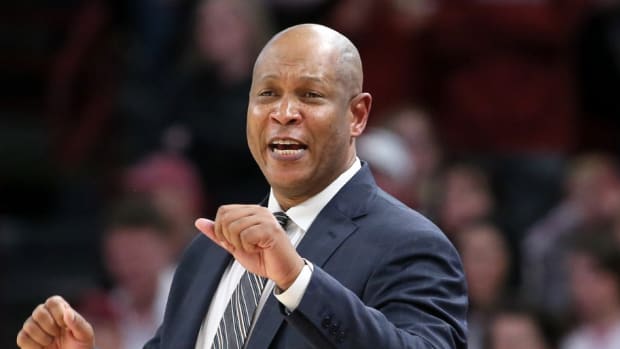SI:AM | Yet Another Snoozer in the NBA Playoffs
Good morning, I’m Dan Gartland. I really should have watched Avalanche-Blues over Celtics-Heat.
In today’s SI:AM:
😏 Joel Embiid’s take on the Heat
If you're reading this on SI.com, you can sign up to get this free newsletter in your inbox each weekday at SI.com/newsletters.
Let’s hope the Finals are better
If you missed Game 5 of the Celtics-Heat series last night, don’t worry too much. Here’s everything you missed: The Celtics won, 93–80, to take a 3–2 series lead. That’s it. It was a dud of a game that isn’t really worth discussing at length. Chris Mannix wrote that it “wasn’t a game—it was a rock fight.”
“Boston won Game 5 of these Eastern Conference finals, taking a 3–2 series lead. Viewers lost. It was 19–17 Miami after the first quarter. It was 42–37 Heat at the half. Boston shot 25% from three through two quarters. That’s downright scorching compared to Miami’s 19%. The Celtics had nearly as many turnovers in the first half (10) as they did in all of Game 4 (11). Jayson Tatum and Jaylen Brown shot 19%—the worst combined field goal percentage in any half this season.”
Though the game was at least close for a while, the Celtics blew it open with a 24–2 run in the late third and early fourth quarters. After that, I probably should have just gone to bed early.
The game continued a trend that we’ve seen throughout these playoffs, especially in the conference finals. In all five games of the Boston-Miami series thus far, one team has opened up an enormous lead. Here is the biggest lead of each game (via StatMuse):
- Game 1: Heat by 20
- Game 2: Celtics by 34
- Game 3: Heat by 26
- Game 4: Celtics by 32
- Game 5: Celtics by 23
Now, in Game 3, the Celtics managed to cut into that big lead (which came at 46–20 early in the second quarter) and make it 93–92 with 2:40 left in the game, but the rest of the games have been snoozers. And it isn’t just the Eastern Conference finals, either.
Tuesday’s Game 4 between the Mavericks and Warriors was a classic “not as close as the box score indicates” game. Though the final score was 119–109 in favor of Dallas, the Mavs led 99–70 after three quarters. Game 1 of that series was exactly as close as the box score indicated. Golden State won 112–87.
So what’s up with all the blowouts?
- Three-pointers: Take the Mavs, for example. In their Game 1 loss, they took 48 threes and made just 11, a 22.9% conversion rate. But in Game 4 when they blew the doors off the Warriors, they made 20 of 43 attempts (46.5%). If those shots that were falling in Game 4 had been falling in Game 1, it would have at least been competitive.
- Injuries: The Heat were without Sixth Man of the Year Tyler Herro last night, who sat out a second consecutive game with a groin injury. Jimmy Butler is dealing with a knee injury, and while he was only sidelined for part of Game 3, it’s clear that the issue is impacting his play (he scored 13 points on 4-of-18 shooting last night). For the Celtics, Marcus Smart (ankle) and Al Horford (COVID-19 protocols) missed Game 1, which the Heat won handily.
- The schedule: The traditional schedule for the conference finals has teams playing every other day, which creates the best cadence of games for television. But that’s grueling for the players, especially when so many off days are spent traveling. The Celtics and Heat flew from Boston to Miami on Tuesday, played last night and will fly from Miami to Boston today before Game 6 tomorrow night. That’s not enough rest.
Mavericks owner Mark Cuban tweeted Tuesday that the play-in tournament was to blame for the compacted schedule, but that’s only true of the earlier rounds. The conference finals have long followed this schedule. It’s a lot to ask of players who have already played 10 or 15 games on top of an 82-game regular season. Maybe it’s time to bake some travel days into the schedule, or we’ll keep seeing noncompetitive games.
The best of Sports Illustrated
Today’s Daily Cover, by Emma Baccellieri, is a profile of Rays outfielder Brett Phillips, the happiest man in baseball:
“The first thing Phillips’s teammates will say about him is that, yes, he’s really like this all the time. The guy who is an unfailing source of energy on the field is the same in the dugout, on the plane, in the clubhouse. He never stops. Even the iconic braying laugh—Phillips’s first viral baseball moment, when he was a minor leaguer with the Brewers in 2016, was a video of him dissolving into hysterics—nothing about that is played up, either. (“I’d never seen anything like it,” Rays outfielder Kevin Kiermaier says of Phillips’s laugh. “But it’s real.”) Whether he’s in the starting lineup or on the bench, succeeding or slumping, this is Phillips—always the happiest guy in the room.”
Conor Orr writes that the Raiders bringing Colin Kaepernick in for a workout “serves as a trial balloon for the rest of the NFL.” … Ben Pickman spoke with some WNBA players about the difficult transition coming back from overseas to begin the season here. … Kevin Sweeney has a list of the biggest college basketball stars still weighing whether to remain in the NBA draft.
Around the sports world
Joel Embiid tweeted during last night’s game that the Heat need “another star.” … The Athletic has a good story about how Smylie Kaufman washed out of the PGA Tour and is trying his hand at announcing as he attempts a comeback. … Jalen Rose revealed that he was the lone person who voted for Kyrie Irving for the All-NBA Team and called it a “mistake.” … The Lakers reportedly interviewed former Blazers coach Terry Stotts for their vacancy on the bench. … Rays pitcher Brooks Raley is from Uvalde, Texas, and spoke about the school shooting there. … The Fever fired coach Marianne Stanley, who will be inducted into the Basketball Hall of Fame this year.
The top five...
… things I saw yesterday:
5. Jaylen Brown’s dunk in the fourth quarter against the Heat
4. The Phillies’ hilariously terrible defense, allowing Dansby Swanson to score after stealing second
3. Robert Thomas’s game-tying goal with less than a minute remaining to prevent the Blues from being eliminated
2. 9-year-old Charlie Springs copying Astros pitcher Luis Garcia’s elaborate windup for his first pitch
1. Nathan MacKinnon’s end-to-end solo effort to score his third goal of the game (the Avalanche lost in overtime, though)
SIQ
Who won the first UEFA Champions League final on this day in 1993? (The competition formerly known as the European Cup had been rebranded at the start of the season.)
- AC Milan
- Olympique de Marseille
- Bayern Munich
- Porto
Yesterday’s SIQ: Who gave up the first hit of Willie Mays’s Giants career, a home run in his fourth game?
Answer: Warren Spahn.
Mays got his first taste of pro ball as a 16-year-old in 1948 with the Birmingham Black Barons of the Negro American League. But Mays was still in high school and his father, school principal and the Black Barons’ manager all insisted that he finish school before becoming a full-time ballplayer, so Mays played only weekend home games for Birmingham.
Mays didn’t graduate until 1950, which is a source of some confusion about his early life, but teams lined up to sign him once he received his diploma and became eligible for a big league contract.
The integrated minors proved to be no trouble for Mays, who had already been beating up on high-level competition in the Negro Leagues. He batted .353 in 81 games for Class B Trenton in 1950 and .477 in 35 games for Triple A Minneapolis in ’51 before getting called up.
The 0-for-12 start before his homer off Spahn was an apparition. Mays batted .274 with 20 home runs and was a runaway choice for NL Rookie of the Year.
It’s also fitting that Mays’s first career hit and homer came against Spahn, whom he faced more times than any other pitcher in his career. Mays batted .305 against him (better than his career average of .301) and hit more home runs (18) off him than off any other pitcher.
From the Vault: May 26, 1975
Given that his time was surpassed just three months later, the most interesting thing about Filbert Bayi’s world-record-setting time (3:51.0) in the mile on May 17, 1975, might not be the race itself but the event it was run at.
The meet was called the International Freedom Games. First held in 1969, the event was meant to honor the memory of Dr. Martin Luther King Jr. It was organized by Bert Lancaster, the president of the Philadelphia Pioneers Track Club, who, according to Stanford University, had drawn the attention of the Southern Christian Leadership Conference “due to his groundbreaking work as the first Black coach to organize and promote a national championship meet.”
“Lancaster is slightly less organized than a Woodstock seating chart,” Ron Reid wrote in his SI cover story, “but somehow, year after year, to the envy of rival promoters, he delivers the athletic goods in quality.”
Lancaster organized the first International Freedom Games at Villanova University in 1969 and kept the event Stateside until moving it to Oslo in ’74 (to mark the 10th anniversary of King’s receiving the Nobel Peace Prize in that city). The ’75 edition was held in Kingston, Jamaica, and attracted all sorts of talent, particularly in the mile.
The star-studded field for the mile included New Zealand’s John Walker, the man who would go on to break Bayi’s record in Sweden in August (3:49.4, a mark that stood for almost four years). Tony Waldrop, who held the indoor mile record at the time, was also there, as was Rick Wohlhuter, the record holder in the half mile, along with several more of the world’s best middle-distance runners.
The loaded field fueled speculation that the world record could fall for the first time since 1967. Bayi, despite a grueling travel schedule to get to Jamaica from his native Tanzania, ran a perfect race, as Reid wrote:
“Bayi led wire to wire, opening a gaping lead early, then losing nearly all of it, then opening up again to win by 10 yards. He did it despite a 23-hour plane trip from Africa to Jamaica via Rome, London, Montreal and New York, which landed him in Kingston 48 hours before the race. And he did it despite a heavy workout the day before the meet. Halfway through the race Bayi twisted around in a sort of golfer’s follow-through for a look back at his opposition, possibly to see what other traditional rules of running he could violate.
“For a middle-distance runner of merely superb ability, any of these factors might have been enough to deny victory, let alone a world record. But the 21-year-old Bayi is extraordinary and he turned the Dream Mile, as it was billed, into vivid reality for a crowd of 36,000 in sultry National Stadium.”
The 1975 edition of the International Freedom Games was the last time the event was held outside the United States. The Games were discontinued in the mid-’80s (the last record I can find of the event is from ’86), but the writing was on the wall for years before that. Brooks Johnson, a coach for the U.S. Olympic team in ’76 and the first Black head coach at Stanford, where the Games were held in the ’80s, told The New York Times in ’83 that it was growing increasingly difficult to attract big-name athletes to compete. Previously, the Games’ connection to King was enough to get people involved, Johnson said, but civil rights were no longer a “vogue” issue.
Check out more of SI’s archives and historic images at vault.si.com.
Sports Illustrated may receive compensation for some links to products and services on this website.






























